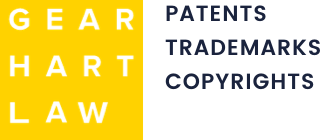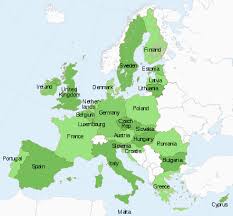The European Union patent law validation process is crucial for inventors and companies looking to protect their intellectual property across multiple EU countries. Validating a patent in the EU ensures legal protection of an invention in all member states, streamlining the safeguarding of innovative ideas. This process is especially relevant for those seeking international patents, as it offers a unified, cost-effective approach to securing patent rights in one of the world’s largest and most diverse markets. Navigating this process is key to maximizing global intellectual property strategies.
Understanding the Basics of International Patent Law
International patent law serves as a cornerstone for protecting intellectual property on a global scale. It encompasses a set of legal frameworks and agreements that enable inventors and companies to secure rights for their inventions in multiple countries simultaneously. This system is designed to promote innovation by ensuring creators can safeguard their inventions across borders, fostering a supportive environment for technological and scientific advancements.
International patent law operates through a complex network of treaties and conventions, such as the Paris Convention and the Patent Cooperation Treaty (PCT), which establish guidelines and procedures for filing and recognizing patents internationally. These agreements make the process simpler for applicants seeking protection in various jurisdictions, reducing the need for multiple, separate national applications. It involves strategic decision-making about where and how to file patents, considering factors like market size, legal protection levels, and enforcement mechanisms in different countries.
The European Union Patent Validation Process: A Step-by-Step Guide
- Filing a European Patent Application: The process begins with the submission of a European patent application to the European Patent Office (EPO). This step involves preparing a detailed description of the invention, claims defining the scope of protection sought, and, if applicable, drawings.
- Granting of the European Patent: Upon successful examination, which assesses aspects like novelty and inventive step, the EPO grants a European patent. This grant indicates the invention meets the necessary criteria for protection.
- Validation in Member States: Following the grant, the patent must be individually validated in each member state where protection is desired. This step often requires translating the patent into the national language and fulfilling specific legal formalities.
- Responding to National Requirements: Each country may have unique requirements for validation, such as designating a local patent attorney or submitting additional forms. Addressing these country-specific needs is crucial for the successful validation of the patent.
- Maintaining the Validated Patent: To keep the patent in force, annual renewal fees must be paid in each country where it has been validated. Regular maintenance is essential to ensure continuous legal protection of the invention in these markets.
EU Annuity Fees and Renewal Payments
In the European Union, annuity fees are paid annually to the EPO until the patent is granted, serving as a mechanism for applicants to regularly evaluate the economic worth of their patents. For the first two years following the filing date, there are no annuity fees due, as renewal fees begin from the third year onwards. This payment structure is designed to ease the initial financial burden on inventors while ensuring ongoing commitment to their patent applications.
The due date for the EU annuity fees aligns with the last day of the month in which the application was filed. This system ensures a consistent schedule for applicants, aiding in financial planning and management. It is essential for patent holders to be aware of these deadlines to maintain their application’s validity and avoid late payment penalties, which can jeopardize their patent rights in the EU. Understanding and adhering to these renewal payment timelines is a key aspect of successfully navigating the EU patent process.
European Patent Granting and Validation Process
The granting of a European patent is a significant milestone in the patent process, typically occurring within 3-4 years from the application filing date. Upon approval, the patent holder is required to pay the grant fee and provide translations of the final claims into the three official languages of the EPO – English, German, and French. This step ensures that the patent is comprehensible and enforceable across multiple jurisdictions within the European Union.
Following the grant, the next critical phase is the validation of the patent in individual EU member states, which must be completed within three months of the grant’s publication. This process, known as European validation, entails additional fees and, in some cases, requires translations of the granted patent into the official languages of the national patent offices. This step is necessary for the patent to be recognized and enforceable in the desired countries.
The Importance of Budgeting for Annuity Fees and Validation Costs
Effective budgeting for annuity fees and validation costs is important in the European patent process. These expenses, necessary for maintaining and validating a patent in various EU member states, can accumulate significantly over time. Annually, patent holders are required to pay annuities in each country where the patent is validated, ensuring continuous legal protection. Additionally, validation costs, including translation fees for non-official languages of the EPO, can vary widely depending on the number of countries chosen and the length of the patent document.
How We Can Assist You in Navigating EU Patent Law
Navigating EU patent law can be challenging, but at Gearhart Law, we can guide you through every phase. We focus on European patent validation and understand the unique legal requirements of each member state. Our services include planning for patent filings, handling the translation process, and ensuring compliance with national laws. We also assist in maintaining your patent by keeping track of renewal deadlines and fees. With our knowledgeable approach, we streamline the process, minimize the risk of errors, and offer personalized advice suited to your particular needs.
Contact an Experienced International Patent Attorney
If you are seeking to protect your innovations in the European Union, Gearhart Law is ready to assist you. Our dedicated team is committed to helping you navigate the complexities of EU patent law with ease and confidence. Contact Gearhart Law today to ensure your intellectual property is expertly managed and protected across Europe.


